Could queens be the next hot borough? Had this question been posed even five years ago, it would have seemed laughable. In the hipster imagination, Queens is a historic dead zone: a quasi-suburbia to be escaped, the quintessence of uncool. But in 2005, as Brooklyn’s gentrification spreads into such unlikely neighborhoods as Bushwick, Queens represents opportunity. After all, the ever-expanding armies of the upwardly mobile have to go somewhere. Already, beachheads have been established in the lofts of Long Island City (touted on the cover of this very magazine in 2002) and the studios of Astoria—and the idyllic English garden homes and stellar ethnic restaurants of Jackson Heights may be the next stop. So hurry: Before Queens is sacked and made safe for Starbucks and sushi, there’s still time to experience some diverse, honest-to-goodness, old-style urban culture. Beyond P.S. 1 and the Unisphere, we’ve found 50 things that define the essence of the borough, from Norman Rockwell throwbacks and Balkan cevapi sandwiches to Art Deco porn theaters and Egyptian hookahs.
1 Hit a real tiki bar. Few aspects of Americana have been so defiled by retro culture as the classic Polynesian lounge. One of the last thriving originals is the bamboo-paneled, totem-pole-strewn tropical oasis that is King Yum (181-08 Union Tpke., Fresh Meadows; 718-380-1918), where “Uncle Jimmy” Eng has been serving up inspired rum libations in fishbowls since 1953. Nothing compares to devouring a pupu platter while downing a drink large enough to drown a cat in.
2 Taste the old Times Square. The Polk Theater (93-09 37th Ave., Jackson Heights; 718-639-4081) is a landmark-worthy Art Deco movie theater, with 1938 neon marquee and tiny ticket booth still intact. It also happens to be an old-school skin-flick house. Recently showing: Lovers’ Rodeo.
3 Pretend you’re in a Norman Rockwell painting. The red-white-and-blue banners hung from lampposts along Grand Avenue between 69th Street and 72nd Place in Maspeth read MASPETH IS AMERICA, a sentiment that might strike you as over the top—unless you’ve actually spent an afternoon there. It’s a picture-perfect diorama of Main Street USA, complete with vintage storefront signage, a dedicated bingo parlor, a unisex hair salon, and a Knights of Columbus hall. Even the McDonald’s looks quaint. But hurry: A sushi bar has moved in.

4 Get cevapi smoke in your eyes. What the hot dog is to Coney Island, cevapi—rustic beef-and-lamb sausages the size of slightly overgrown cocktail franks—are to Sarajevo. Outside of the Balkans, the place to get them is at Cevabdzinica Sarajevo (37-18 34th Ave., Astoria; 718-752-9528), a brightly lit Bosnian hash house off the beaten Astoria path (look for the cloud of grill smoke hovering above the roof).
5 Take the cure—for anything. Remedies for all your ills—spiritual, sexual, or fiscal—await at Botanica La Caridad (96-07 Roosevelt Ave., Corona; 718-639-3570). Just look in the window: laminated portraits of Pope John Paul II, aerosol cans of “Love Spray” and “Money Attracting Spray,” framed Catholic benedictions, “spiritual-aromatic” bath salts, ceramic Virgin Mary statuettes, “slendering” cream, breast-enhancing cream, and for good measure, bottles of cod-liver oil.
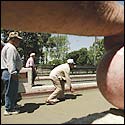
6 Get lost in a forgotten park. The very name of Juniper Valley Park (bounded by Dry Harbor Road, Juniper Boulevard, and Lutheran Avenue), and of the neighborhood in which it sits, Middle Village, evokes a sylvan fantasy. Bring a ball and glove: The 55-acre green space contains more than a half-dozen beautifully groomed ball fields. Or bring a paramour: Shady groves of mature trees shelter sun-dappled benches and gentle hillocks.
7 Set your kitchen on fire. The Guyana West Indian Grocery (123-02 Liberty Ave., Richmond Hill; 718-835-2023) is Kalustyan’s with a Caribbean twist. In addition to a staggering line of spices, preserved foods, and condiments—including canned jackfruit, cassava extract, guava jelly, canned goat’s milk, and (everyone’s favorite) corned mutton—the twenty-year-old store has its own bakery and fish-and-meat counter. When you’re done shopping for Calypso sauce and puja powder, hit Liberty Avenue’s food markets, purveyors of prehistoric-looking Amazon-basin freshwater fish. If you haven’t had broiled fillet of whiskered hassar, your palate is not complete.
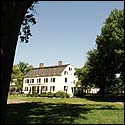
8 Tour the country house of a Founding Father. The King Manor Museum (Jamaica Avenue at 153rd Street, Jamaica; 718-206-0545) is Queens’ own country house in the city, a big, yellow eighteenth-century gambrel-roof mansion that sits serenely and improbably on eleven grassy acres in a notoriously parks-deprived commercial sector. Exactly 200 years ago, Rufus King, a lesser-known Founding Father—and one of New York’s first two senators—purchased the house, calling it his “place in the country.” Even today, there’s a quaint earnestness about the site that seems more rural than urban.
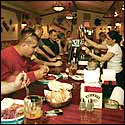
9 Hoist a pint of Staropramen. While the Bohemian Hall & Beer Garden has become a bona fide tourist attraction, Koliba (31-11 23rd Ave., Astoria; 718-626-0430) feels like the insular refuge of a Czech-expat crowd, elbow-to-elbow at the cozy bar. Enormous planks of chicken schnitzel, goulash served with sliced-bread “dumplings,” spaetzle in a tangy sheep’s-milk sauce—it’s not exactly the world’s lightest cuisine. Which is where the slightly bitter, palate-cleansing Pilsner comes in.
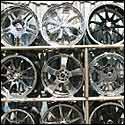
10 See where cars go to die. Once identified as the “ash-heaps” in Fitzgerald’s The Great Gatsby, now affectionately called “Karmandu,” the open-air automobile graveyard around 127th Street and Roosevelt Avenue is the largest car-part bazaar in the city. Drive down the dusty, unpaved main drag, and grease-covered men will emerge to offer you used but still good (they say) windshields, bumpers, and head gaskets, in every tongue.
11 Solve all your electronic problems at once. You may never find yourself in need of a new cell phone, a vacuum cleaner, a safe, an electric guitar, a typewriter, a pocket scale, a wristwatch, an umbrella, an Elvis-doll AM radio, and a mirrored disco ball all at the same moment. But if you do, get thee to the Electronics Discount Center (159-05 Jamaica Ave., Jamaica; 718-523-1576).
12 Scarf down meat on a stick. The distinctive Central Asian cuisine of the Bukharan Jews can’t be found at the 2nd Ave. Deli. For the full-on experience, you’ll have to travel to Salut (63-42 108th St., Forest Hills; 718-275-6860), where you’ll encounter large, boisterous parties downing vodka and devouring scarily sharp skewers/sabers of charcoal-grilled shish kebab.
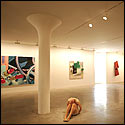
13 Keep modern art to yourself. When you tire of battling the throng on MoMA’s fifth floor, take the N train to the Fisher Landau Center for Art (38-27 30th St., Long Island City; 718-937-0727). The immaculately renovated parachute-harness factory holds a trove of painting, photography, and sculpture by big names like Richard Prince, James Rosenquist, and Shirin Neshat, as well as lesser-knowns such as Peter Cain and John Duff.
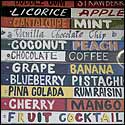
14 Slurp the best ices in the city. In 60 years, prices at Pete Benfaremo’s Lemon Ice King of Corona (52-02 108th St., Corona; 718-699-5133) might have gone from a nickel to a dollar for the small cup, but the ices remain the slushiest in the known universe.
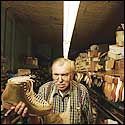
15 Buy skates from the same store as Sasha Cohen—and Miles Davis. Underneath the squeaky-clean suburban sheen of competitive ice skating lies a gritty urban secret: Scores of top skaters get shod inside a shabby-looking shingle-roofed building on Jamaica Avenue. If you spring for a $500 pair of custom-made leather skating boots at Klingbeil Shoe Labs (145-01 Jamaica Ave., Jamaica; 718-297-6864), you get to try the seat of honor: an ancient wood fitting throne that has been occupied by Sasha Cohen, Oksana Baiul, Sarah Hughes—and, implausibly, Miles Davis, who once ordered a pair of roller skates.
16 Have Ida cook you dinner. With its bunkerlike façade, its cozily dated interior, and its devout clientele, Manducatis (13-27 Jackson Ave., Long Island City; 718-729-4602) is the avatar of anti-style—so reassuringly unhip, it’s hip. It’s the epitome of the Italian-American family business: patriarch Vincent Cerbone manning the phones and the door, wife Ida presiding over the kitchen, and son Anthony affably assisting with the extensive and somewhat famous wine list. Regulars bypass the menu for the specials, if they order at all. More often, Ida knows what they like, and her finely calibrated red-sauce radar is seldom off.
17 Go to a real dive bar. On the industrial fringe of Long Island City, you’ll find the ill-named Easy Street Lounge and Bar (36-18 Greenpoint Ave., Long Island City; 718-361-5784), a cavernous ex-auto-repair shop. Take a seat (there are plenty to be had) near the exit, order a Wild Turkey, and discreetly absorb the atmosphere, which alternates between catatonic and ballistic.
18 Try the Third Way of grocery shopping. The tiny Greek markets that dot the landscape of 30th Avenue in Astoria form a sort of latter-day agora that represents an alternative to Manhattan’s supermarkets and corner delis. A clamorously sociable alfresco atmosphere pervades as representatives of every Balkan canton go about their business. As you take it all in, you can’t help feeling a little like Vito Corleone in The Godfather as he considers alighting from his car to investigate the homely allure of oranges at his local fruit stand.
19 Get into grappa. Your burgundy-cummerbunded waiter’s a lifer. Your burly, cuff-linked neighbors are straight out of GoodFellas. And if you’re smart, you’re downing a hefty portion of gnocchi alla Gorgonzola or fusi alla grappa, two specialties of Piccola Venezia (42-01 28th Ave., Astoria; 718-721-8470), a 32-year-old Astoria stronghold specializing in the Northern Italian cuisine of Istria. If the captain takes a shine to you, you’ll get a sample of powerful house-infused grappa.
20 Find suburban bliss. A stroll through Sunnyside Gardens (take the 7 train to 46th St.) brings the scent of freshly tilled earth, the chirping of birds, and the sight of garden gnomes. It’s the country’s first “garden city,” developed in the late twenties on 77 acres, with each block forming a common landscaped court. Through the middle runs aptly named Bliss Street: Sky-grazing London plane trees arch over unfenced, flower-filled front yards.
21 Visit a luxury fortune-teller. There are a lot of fortune-tellers and ad hoc healers in Queens, but El Indio Amazonico (86-26 Roosevelt Ave., Jackson Heights; 718-779-9390) is el rey—as the piles of crutches in his office “waiting room,” supposedly thrown away by former clients, attest. The ancient Colombian, who sports a six-inch feather through his nose, is pricey—as high as $1,000. But then, as he reminds you, “the future is not cheap.”
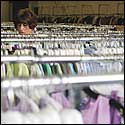
22 Hit a vintage clothes store that hasn’t been picked through. The mere size of the Steinway Salvation Army (34-02 Steinway St., Long Island City; 718-472-2414) increases the chances of striking pay dirt: At 17,440 square feet, it’s by far the largest in the city.
23 Discover the Queens arts scene. The SculptureCenter (44-19 Purves St., Long Island City; 718-361-1750) is a great place to spot young talent on the way up. The Maya Lin–designed interior has hosted such playful projects as Olav Westphalen’s miniature-blimp derby, Patrick Killoran’s clear plastic port-a-potty, and the do-it-yourself “Paper Sculpture Show.”
24 Explore New York’s other Chinatown. The trouble with restaurants that use adjectives for names is that they seldom live up to them. At Spicy & Tasty (39-07 Prince St., Flushing; 718-359-1601), the title is, if anything, an understatement. You can’t go wrong with complex, powerfully spiced Sichuan standards like homestyle bean curd, dry-cooked string beans, dan-dan noodles, and twice-cooked pork.
25 Host your next big party in a beautiful ballroom. Forget the Puck Building. For a lot less money and hassle, you can spend an evening in the recently restored and beautifully fenestrated Second Empire ballroom of the Poppenhusen Institute (114-04 14th Rd., College Point; 718-358-0067), a 137-year-old national landmark that once served as the town hall in the sleepy waterfront community of College Point.
26 Enter Queens’ heart of darkness. The Rikers inmates dropped off at Queens Plaza after completing their sentences could be forgiven a moment’s hesitation. Strip clubs, doughnut shops, parking lots. Empty sidewalks nearly swallowed up by cataracts of traffic. And yet, the walk west on Queens Plaza South in the shadow of the Queensboro Bridge is oddly exhilarating. In the right mood, the din of engines summons thoughts of the sea, and the rusting girders the romantic decay of piers and ports. The bleak, silent buildings feel uncanny, like abandoned space in the midst of the metropolis.
27 Travel back in time to colonial New York. Old Astoria Village is a must for architecture buffs—and, thanks to its location near the East River waterfront, a focal point for development. The Greater Astoria Historical Society (718-278-0700) gives tours of dozens of pre–Civil War homes and buildings; each year, two or three are bulldozed. The looker of the Village is a blindingly white 1840s columned house at 26-07 12th Street, dubbed “Tara”—one expects Scarlett O’Hara’s hoop skirts to sweep out the front door at any moment.
28 Hang with legions of advanced drinkers. When the signature cocktails are sixteen-ounce brain-numbers with names like Red Death, Killer Crock, and Shark Attack, those with delicate constitutions should stay away. The storied 5 Burro Cafe (72-05 Austin St., Forest Hills; 718-544-2984) on Forest Hills’ main drag is a mild-mannered Mex by day and a teeming frenzy by night, as bikers, college kids, and stewardesses (housed in the neighborhood by the airlines) descend for happy hour. Also, you get plastic dinosaurs with your drinks.
29 Sample olives in their natural habitat. Every deli in Greek Astoria seems to have an olive bar. Is there a cheaper thrill than sampling the different varieties one by one? Green olives are chewy, often stuffed with almonds, garlic, or feta cheese. Purple kalamatas, though, are the stuff of which olive odes are made. Cured in vinegar, they possess an intense, puckering acidity.
30 Smoke from a hookah. There are plenty of tremendous Egyptian restaurants and pastry places on Steinway Street, but for sheer Cairo ambience, nothing beats the Egyptian Coffee Shop (25-09 Steinway St., Astoria; 718-777-5517), where a man (if women are allowed, they’re very well-hidden) can lean back and smoke flavored shi-sha tobacco from the four-foot-long hose of a hookah, enjoy fresh mango juice, and watch the news of the day on Al Jazeera.
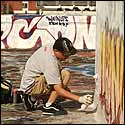
31 See living, breathing graffiti art. As the 7 train from Manhattan pulls into Court House Square, look to your left for a powerful, if fleeting, glimpse of graffiti art courtesy of nonprofit organization 5 Pointz: The Institute of Higher Burnin’, which parcels out space on the exterior of a converted warehouse building (Jackson Ave. and Crane St.) a few blocks from P.S. 1 to budding aerosol artists. The best view is from the train, but you can also check out the ever-changing display up close.
32 Get over the Brooklyn Bridge. For panoramic views of midtown Manhattan to rival Brooklyn’s finest, stroll the Pulaski Bridge (11th St. and Borden St.), which connects Greenpoint and Long Island City.
33 Play bocce. At the Istria Sport Club (28-09 Astoria Blvd., Astoria; 718-728-3181), members bond over bocce and old Italian card games like tresette and briskula, and the restaurant has attracted Mario Batali and Lidia Bastianich. You must be of Istrian descent to be a member, but anyone can drop by to throw a few balls.
34 Flash back to your childhood—or your father’s. Remember life before video games? Revell model planes, Estes rockets, Lionel train sets, slot cars … All these totems of a simpler time can still be found at Nagengast Hobbies (68-02 Fresh Pond Rd., Ridgewood; 718-821-0958), a 59-year-old family-owned toy store that’s one of the last holdouts against electronic games.
35 Soak up Queens noir. In the off-season, Aqueduct racetrack is just another tatty outpost of a dying sport. In winter, the so-called Big A becomes a phantasma of low-level need and greed. To fill the state’s insatiable coffers, less-than-classy horses run on a special winterized track in front of perhaps 3,000 gray-faced, desperate plungers. It’s the perfect down-and-out setting for a noir novel.
36 Kick back in the hood. You’ll find no finer example of that endangered urban species, the bona fide neighborhood tavern, than Divers Cove (29-01 Francis Lewis Blvd., Bayside; 718-352-9631), a convivial, 50-year-old corner saloon that still sports the classic neon-and-aluminum bar sign outside. Strangers are a rarity, but if you’re quick with your pleases and thank-yous, you’ll instantly earn the moniker “buddy” or “darling” or “sweetheart.” A buck-fifty buys an insanely cold frosted mug of Rheingold and, on game days, entry into the inner sanctum of obsessive, pure-bred, all-weather, lifelong Mets fans.
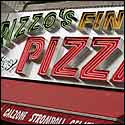
37 Eat real pizza. While the thick-and-doughy school of Sicilian pizza reigns supreme in Manhattan, the opposing thin-and-crisp camp still has a foothold in the outer boroughs. Brooklyn is thin-Sicilian country, to be sure, but the holy grail of this rarefied style is at Rizzo’s (30-13 Steinway St., Astoria; 718-721-9862). Sophisticated restraint shows in a minimal toss of mozzarella and a flick of parmigiana and Romano, which allows the zingy tomato sauce to shine through. And the crust is perfect: exceptionally light and tender, about a quarter-inch thick, with a crunchy, golden raised edge.
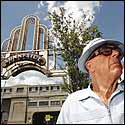
38 Say hello to Sunnyside. The cheery Art Deco sign (46th St. and Queens Blvd.) that announces the Sunnyside neighborhood to the world is in a state of disrepair, but that somehow adds to its charm.
39 Nosh on knishes. Gray’s Papaya’s Recession Special has nothing on the Classic at 53-year-old Knish Nosh (100-30 Queens Blvd., Forest Hills; 718-897-5554): one Hebrew National frank in a blanket, one knish (potato, meat, kasha, broccoli, spinach, or mushroom), and a soda, $4.75.
40 Stare industrial decay in the face. Fools imagine the real view of the city is from the arching roadway of the Kosciuszko Bridge. But true New Yorkers know what’s below is what really counts. The ole Koz is one of the most beat-up stretches of road in the city, and a view of the ancient, rusting pilings (best seen from Calvary Cemetery below) is a true dystopic freak-out.
41 Serve on the last grass courts in New York. Rushing the net at the West Side Tennis Club (1 Tennis Pl., Forest Hills; 718-268-2300) is like playing catch on Yankee Stadium’s center field: You share the turf with history. When the U.S. Open was played here, the grass courts were graced by Arthur Ashe, Jimmy Connors, and Chris Evert. Now, in exchange for a hefty annual membership fee ($3,169 for an adult), players can cool their heels in the vast 1914 Tudor-style clubhouse after a few leisurely sets.
42 Set-design your apartment. Those who style The Sopranos and Law & Order know that The Furniture Market (22-08 Astoria Blvd., Astoria; 718-545-3935) offers an eclectic mix of furniture, from turn-of-the-last-century antiques to high-end Drexel and Thomasville modern pieces.
43 Feel Zen. The recently renovated Noguchi Museum (32-37 Vernon Blvd., Long Island City; 718-204-7088) is one of the city’s most soothing art experiences. The airy sculpture garden flanked by birch trees and ivy, the breeze coming off the East River, and the trickling fountains make the case for Isamu Noguchi’s belief in useful abstraction.
44 Get in on the ground floor. Real-estate visionaries are spending $500,000 and up on the Mathews Model Flats, three-story structures built from 1908 onward throughout western Queens as a response to the shoddy tenement housing of the 1800s. Faced with two-toned yellow-and-brown Kreischer bricks from Staten Island, the flats included amenities unheard of at the time for working-class housing, including dumbwaiters, skylights, and windows in every room.
45 Walk among the crypts. Across a broad swath of southern Queens, from Blissville to Woodhaven, lie a dozen or so cemeteries that once earned this part of the borough the name “City of the Dead.” But don’t let that put you off: Each of these grassy, tree-shaded fields of rest—from bucolic Mount Olivet Cemetery to the impossibly dense rows of Hebrew-inscribed headstones of Mount Zion Cemetery, both in Maspeth—offers a contemplative reprieve from the din of city life.
46 See art movies for less. Here’s the movie-museum-membership tale of the tape: In this corner, Film Forum, where $65 will allow you to shave a mere $5 off a $10 ticket. In the other, the Museum of the Moving Image (36th St. at 35th Ave., Astoria; 718-784-4520), where a modest $50 gets you in free to all screenings. Are they even fighting in the same class? No trailers, either.
47 Get it “Thai-spicy.” For years, Sripraphai (64-13 39th Ave., Woodside; 718-899-9599) has been the defiantly delicious rebuttal to complaints that you can’t get good Thai food in New York. A recent, relatively glitzy expansion gave some pause—would a dressed-up Srip become a watered-down victim of its own success? Not at all: The pad might be fancier, but not the pad Thai.
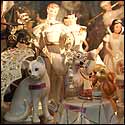
48 Overdose on kitsch. A typically modern New Yorker might not swoon when she walks into Newman Gifts (78-03 37th Ave., Jackson Heights; 718-429-3413)—but it’s a good bet her grandmother will. The store is a veritable temple of preciousness, renowned nationwide among collectors of Lenox crystal, Capodimonte figurines, and Stangl pottery. Kitsch doesn’t come cheap: A three-inch-high accordion-playing child by Hummel—one of hundreds of cherubic faces staring down hauntingly from glass cases—will set you back $245. For Grandpa, there’s a surprisingly wide selection of porcelain topless nymphs.
49 Witness the last days of Shea Stadium. Before it all comes down in 2009—if it actually does, now that the Olympics are gone—enjoy the decayed 1964 World’s Fair ambience, the prehistoric scoreboard, the lame lit-up apple out in center field, and the encrusted layers of grease.
50 Really get away from it all. An incongruous, end-of-the-Earth solitude descends as you enter Hermon A. MacNeil Park (Poppenhusen Ave. at 115th St., College Point), a shady 29-acre peninsula in remote northwest Queens. You’re four miles from the nearest subway station and a world away from the bustle of Manhattan, which looms in the hazy distance across the East River. And yet the roar of modernity is so close you can literally feel it: A mere 7,500 feet of sparkling water separates the park from La Guardia’s Runway 4-22.